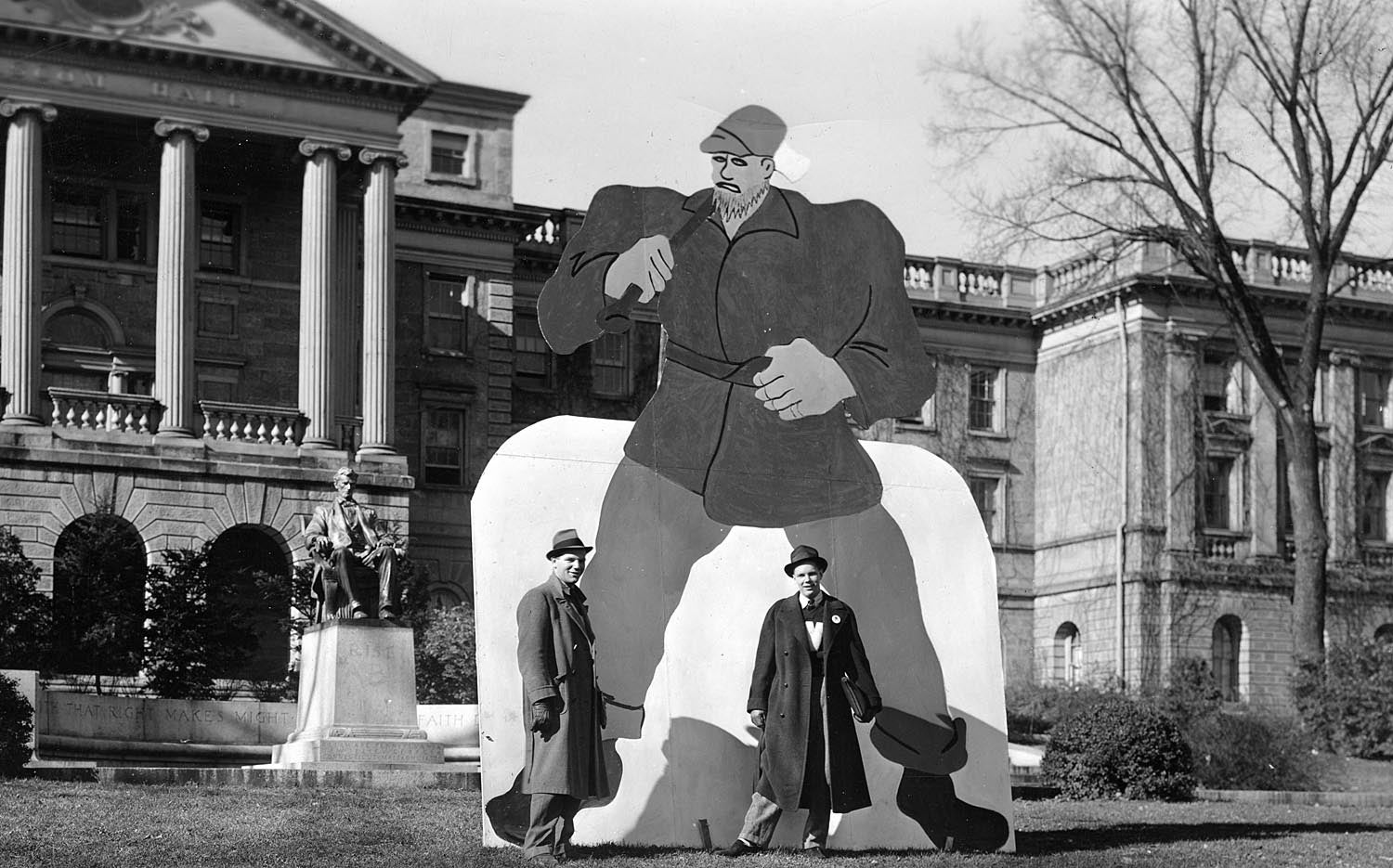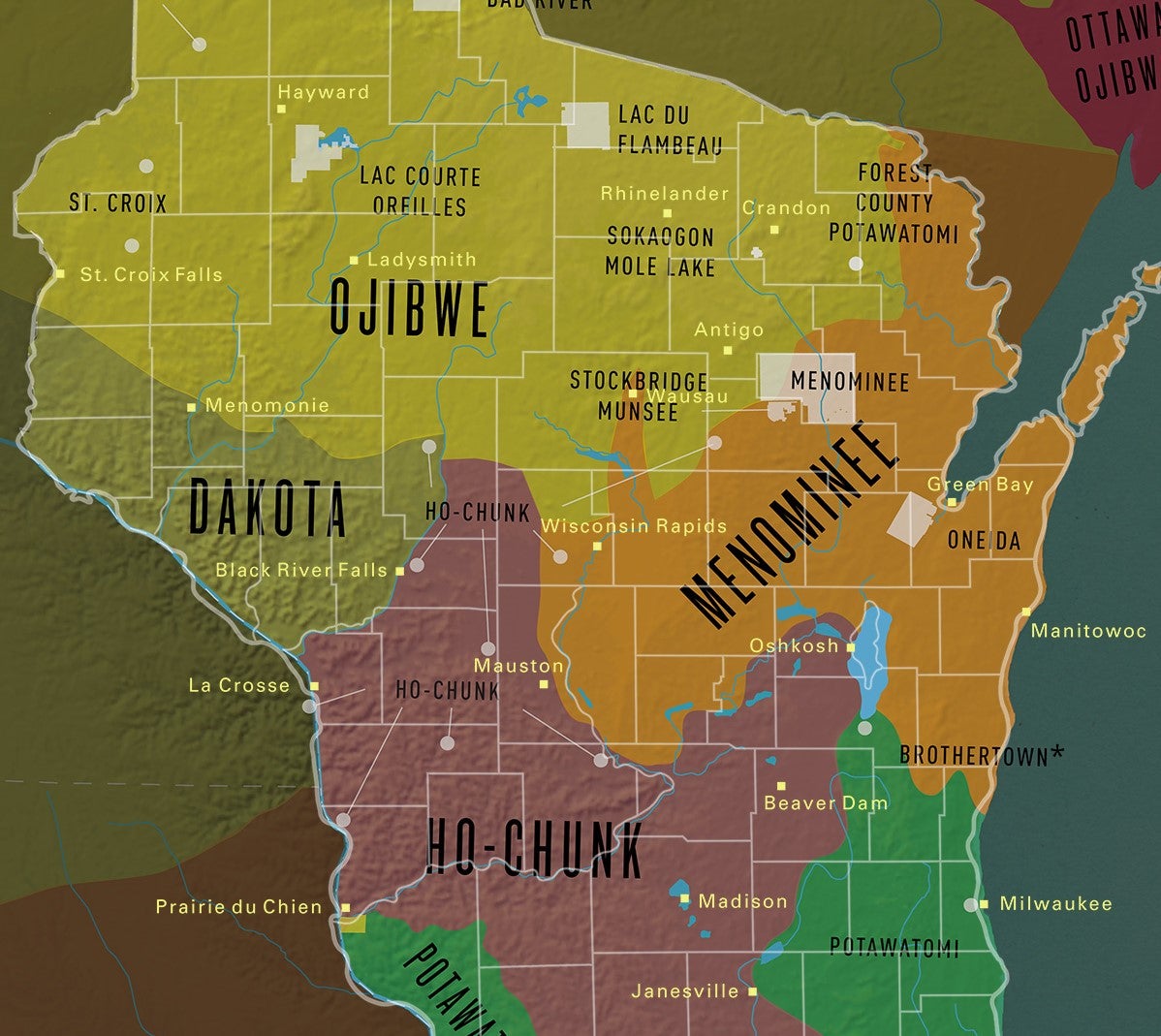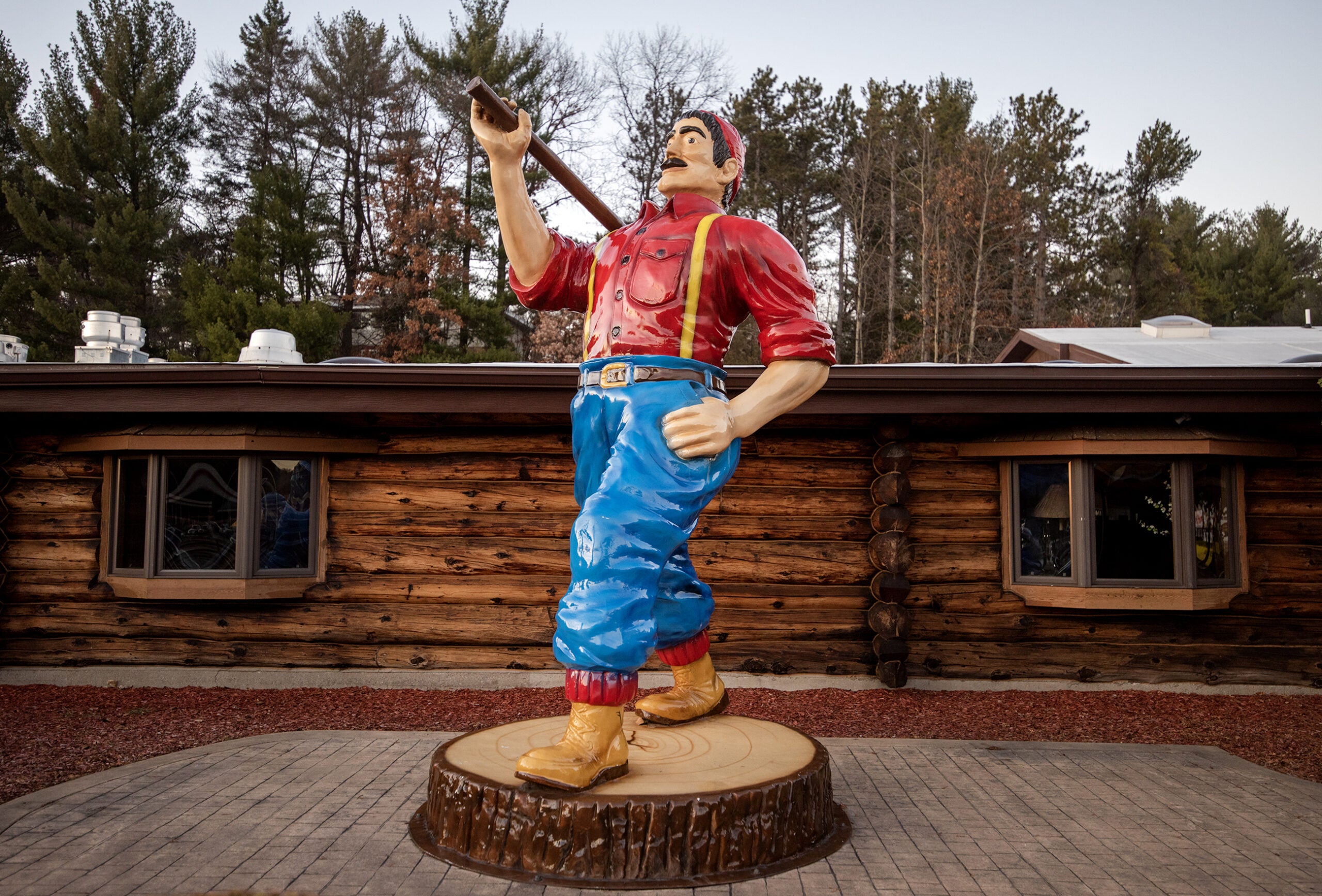June 28 is National Paul Bunyan Day, and while many places claim the giant lumberjack as their own, Wisconsin lays claim to the first known stories and the most authentic collection of original Bunyan stories.
“All lumberjacks believe, or pretend to believe that he really lived and was the pioneer in the lumber country,” wrote Charles E. Brown, an archeologist and director of the museum of the State Historical Society of Wisconsin, in his collection of Bunyan stories gathered straight from Wisconsin loggers. “Some of the older men even claim to have known him or members of his crew.”
Bunyan was known for his great size and strength. Seven feet tall with a stride of seven feet, Bunyan was said to have logged all the timber in North Dakota, scooped the hole for Lake Superior and accidentally created the Mississippi River by overturning a water tank when his equally large ox Babe slipped.
Stay informed on the latest news
Sign up for WPR’s email newsletter.
He was large, but that didn’t mean he wasn’t fast. Bunyan could blow out the candle on one end of the bunkhouse and be in bed before darkness fell.
These were oral stories, passed between lumberjacks and campsites in the late 19th century. Some were intended to intimidate newbies to the camp while others were merely entertainment.
The earliest dated reference to Bunyan comes from a logging camp north of Tomahawk in 1885. A few Bunyan tales were printed in newspapers and magazines in the early 20th century, bringing the tales to a wider audience. They reached even deeper into popular culture in the 1910s when the Red River Lumber Company of Minneapolis published books of Bunyan tales as promotional items.
Between 1914 and 1916, the most authentic collection of Bunyan stories was collected from loggers and recorded by University of Wisconsin student K. Bernice Stewart and her English professor, Homer A. Watt. They published their stories in 1916, noting “some of these stories, as must be expected of any such series, are too coarse for publication.” But most were fun and relatively wholesome.
As the lumber industry declined in northern Wisconsin, replaced by tourism as the foundation of the economy, Bunyan transitioned from a real figure to a nostalgic emblem of the past.
Cities across the country, from Maine to Oregon, have organized festivals and erected statues to the famed woodsman. Kids perform plays about Paul Bunyan and his image has been used for a variety of causes and to sell a multitude of products.
Wisconsin Public Radio, © Copyright 2024, Board of Regents of the University of Wisconsin System and Wisconsin Educational Communications Board.





